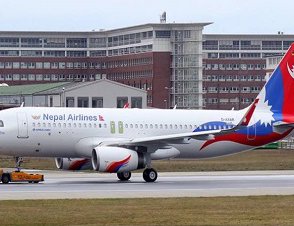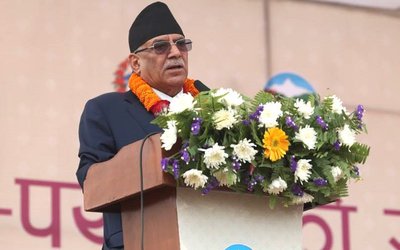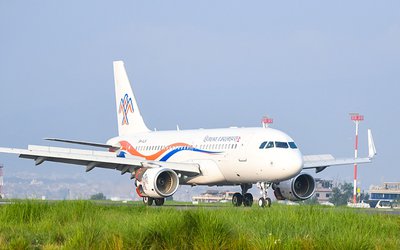
Although there is a huge potential to increase the number of tourists in Nepal, the country is yet to take full benefits from it. After almost six decades, Nepal is yet to be able to lure a million tourists.
As its internal problems are almost settled, Nepal Tourism Board is now coming up with new programs to lure more tourists by identifying new destinations for visitors. Given the current political situation, however, NTB has a very difficult task to perform.
International tourist arrivals reached 1,138 million in 2014, a 4.7% increase over the previous year, according to the latest UNWTO World Tourism Barometer. For 2015, UNWTO forecasts international tourism to grow by 3% to 4%, further contributing to the global economic recovery.
If things go the right way, Nepal expects to see increase in the number of visiting tourists. As Nepal Airlines will add two new aircraft and increase its flight connectivity, it will lure more tourists to visit here in the coming years.
However, all will be depend on the political environment of the country.
The number of international tourists (overnight visitors) reached 1,138 million in 2014, 51 million more than in 2013. With an increase of 4.7%, this is the fifth consecutive year of above average growth since the 2009 economic crisis.
“Over the past years, tourism has proven to be a surprisingly strong and resilient economic activity and a fundamental contributor to the economic recovery by generating billions of dollars in exports and creating millions of jobs. This has been true for destinations all around the world, but particularly for Europe, as the region struggles to consolidate its way out of one of the worst economic periods in its history,” said UNWTO Secretary-General, Taleb Rifai, opening the Spain Global Tourism Forum in Madrid.
By region, the Americas (+7%) and Asia and the Pacific (+5%) registered the strongest growth, while Europe (+4%), the Middle East (+4%) and Africa (+2%) grew at a slightly more modest pace. By sub-region, North America (+8%) saw the best results, followed by North-East Asia, South Asia, Southern and Mediterranean Europe, Northern Europe and the Caribbean, all increasing by 7%.
Positive outlook for 2015
For 2015, UNWTO forecasts international tourist arrivals to grow between 3% and 4%. By region, growth is expected to be stronger in Asia and the Pacific (+4% to +5%) and the Americas (+4% to +5%), followed by Europe (+3% to +4%). Arrivals are expected to increase by +3% to +5% in Africa and by +2% to +5% in the Middle East.
The positive outlook for 2015 is confirmed by the UNWTO Confidence Index. According to the 300 tourism experts consulted worldwide for the Index, tourism performance is expected to improve in 2015, though expectations are less upbeat than a year ago.
Europe (+4%), the most visited region with over half of the world’s international tourists, saw an increase of 22 million arrivals in 2014, reaching a total of 588 million. Thanks to these results, tourism has been a major contributor to the European economic recovery.
International tourist arrivals in Asia and the Pacific (+5%) increased by 13 million to 263 million. The best performance was recorded in North-East Asia and South Asia (both +7%). Arrivals in Oceania grew by 6%, while growth slowed down in South-East Asia (+2%) as compared to previous years.
The Americas was the best performing region in relative terms with growth of 7%, welcoming an additional 13 million international tourists and raising the total to 181 million. Growth was driven by North America (+8%), where Mexico posted a double-digit increase, and the Caribbean (+7%). Arrivals to Central America and South America (both +6%) grew at double the rate recorded in 2013 and well above the world average.
A pickup in expenditure on international tourism from traditional source markets compensated for the slowdown of the large emerging markets, which had been driving tourism growth in previous years.
The total number of trips abroad from China is estimated to have increased by 11 million to 109 million in 2014. Expenditure was up by 17% in the first three quarters of 2014, a strong result but slower than in previous years (40% in 2012 and 26% in 2013, respectively). China is the world’s largest outbound market since 2012 with a total expenditure of US$ 129 billion in 2013.
A pickup in demand from traditional source markets compensated for the slowdown of the large emerging markets. Expenditure from the United States, the second largest outbound market in the world, grew by 6%. Noteworthy is also the rebound of France (+11%), Italy (+6%) and the United Kingdom (+4%).
- TANAHU HYDROPOWER PROEJCT: A Significant Achievement
- Apr 15, 2024
- AMBASSADOR HANAN GODAR: Sharing Pain With A Nepali Family
- Mar 30, 2024
- VISIT OF KfW AND EIB TO NEPAL : Mission Matters
- Mar 25, 2024
- NEPAL BRITAIN SOCIETY: Pratima Pande's Leadership
- Mar 24, 2024
- NEPAL ARMY DAY: Time To Recall Glory
- Mar 15, 2024
















